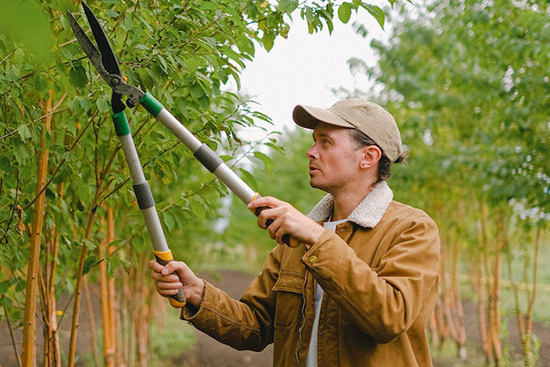In urban environments, where nature and city life intertwine, the health and aesthetics of trees significantly impact the quality of urban living. Regular tree trimming is a crucial aspect of tree care that not only enhances a tree’s appearance but also improves its health and the safety of the surrounding area. Let’s explore why consistent tree trimming is essential, and how it benefits both the trees and the urban communities they adorn.
Enhancing Tree Health
One of the primary benefits of regular tree trimming is the improvement it brings to a tree’s health. Removing dead or dying branches is crucial as these can sap energy from the tree and lead to disease and insect infestation. By periodically trimming these parts away, a tree can direct more of its resources toward the growth of healthy branches and leaves.
Moreover, strategic trimming helps increase the sunlight and air flow to the tree’s canopy, which is vital for the process of photosynthesis and can help prevent the growth of harmful fungi and bacteria. This practice ensures that trees live longer and healthier lives, thereby sustaining the urban canopy for future generations.
Safety for Residents and Property
Safety is another critical reason why urban areas benefit from regular tree trimming. Overgrown branches can pose significant risks during severe weather conditions. They can break off and fall onto power lines, vehicles, and even people, causing harm and disruption. Regular trimming reduces these risks by managing the tree’s structure and stability, ensuring that limbs are secure and less likely to break.
Aesthetic Appeal and Property Value
Well-trimmed trees significantly enhance the aesthetic appeal of an area, contributing to a pleasant and inviting urban environment. Trees that are neatly trimmed and maintained increase property values and attract visitors and potential residents to the area. They contribute to the overall landscape design and demonstrate a community’s commitment to a healthy, sustainable environment.
Encouraging Wildlife
Regularly trimmed trees can also be a haven for urban wildlife, providing birds and small mammals with opportunities for shelter and nesting. By maintaining a balanced tree structure through trimming, these trees remain robust and healthy, making them ideal habitats for various species. This biodiversity is vital for ecological balance within urban areas, contributing to a richer, more varied urban ecosystem.
Compliance and City Regulations
Urban areas often have specific guidelines and regulations regarding tree maintenance to ensure safety and uniformity in public spaces. Regular trimming helps comply with these regulations, avoiding legal issues or fines from the city. It shows a proactive approach to tree care, which can be beneficial for property owners and local governments alike.
Conclusion
The practice of regular tree trimming is more than just a maintenance task—it’s a critical investment in the health and safety of urban environments. Whether it’s enhancing tree health, ensuring safety, boosting aesthetic appeal, supporting wildlife, or complying with local regulations, the benefits of maintaining well-trimmed trees are extensive. For those looking to preserve and enhance the urban green spaces, professional tree trimming services are invaluable resources that help maintain the vitality of the city’s green infrastructure. By engaging experts in tree care, urban communities can ensure that their trees continue to thrive and enrich the urban landscape for years to come.




